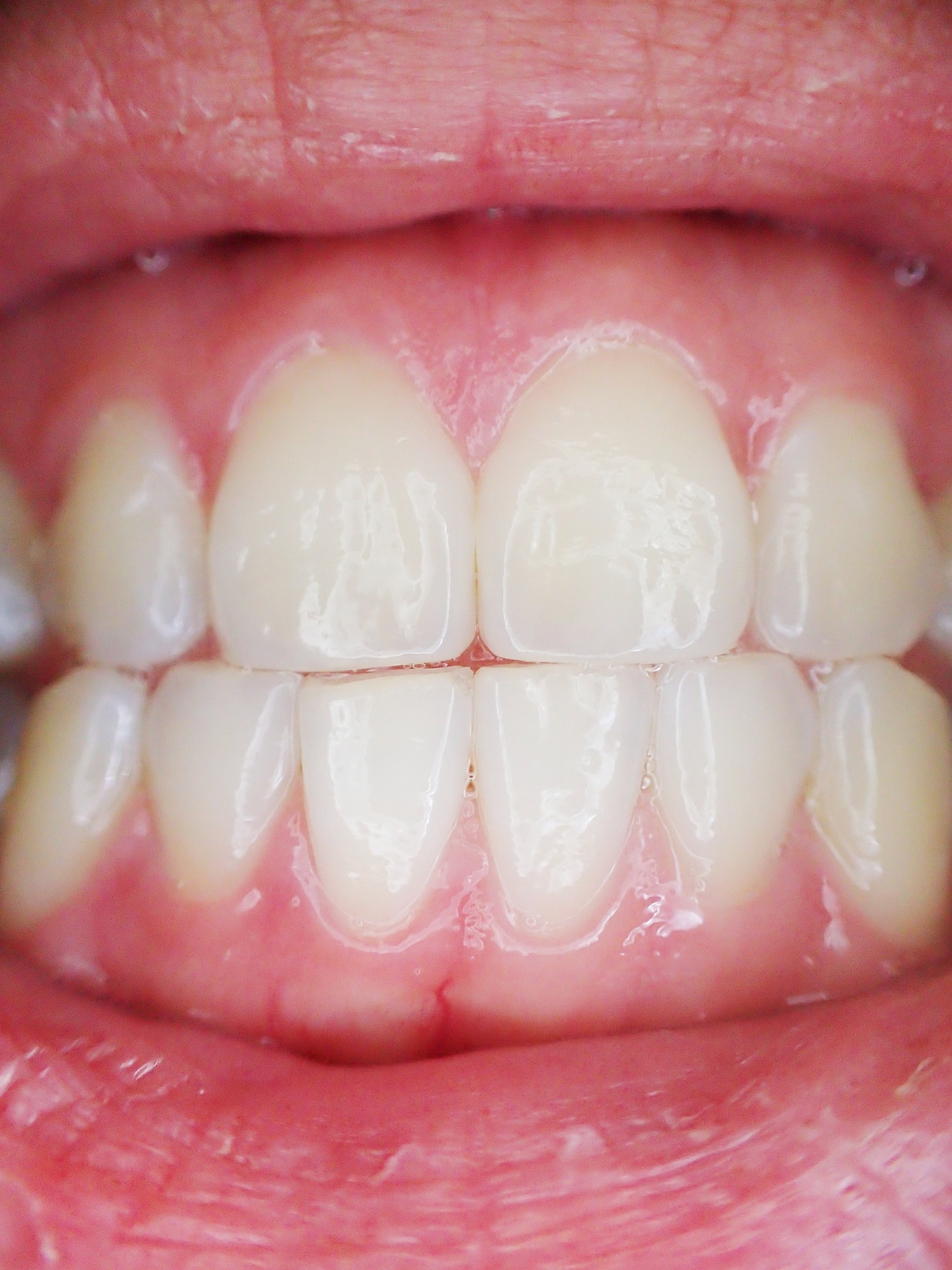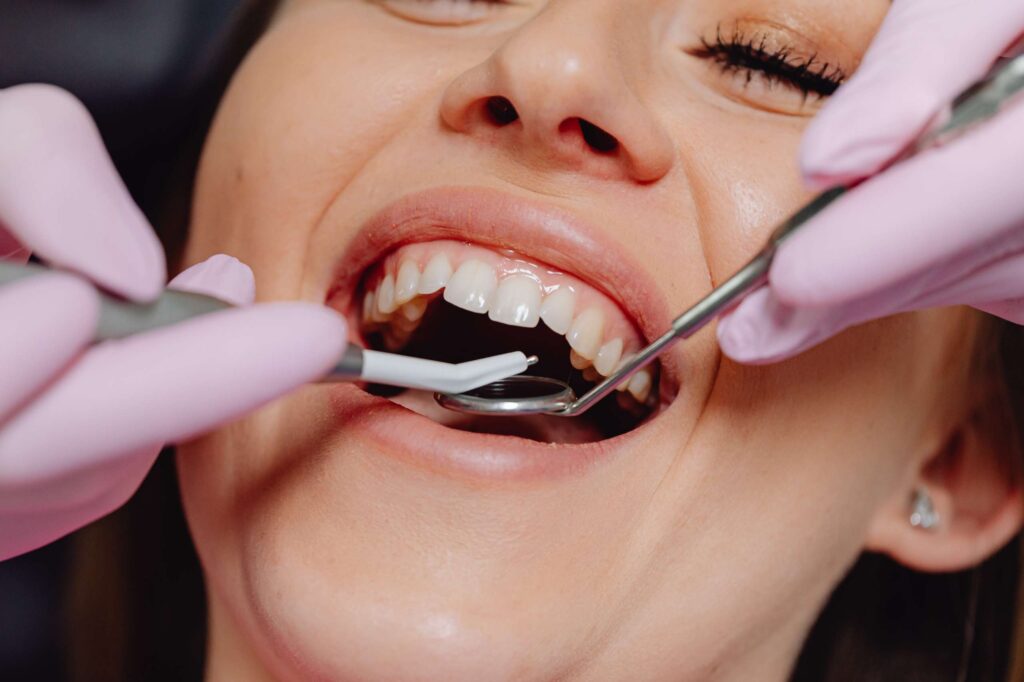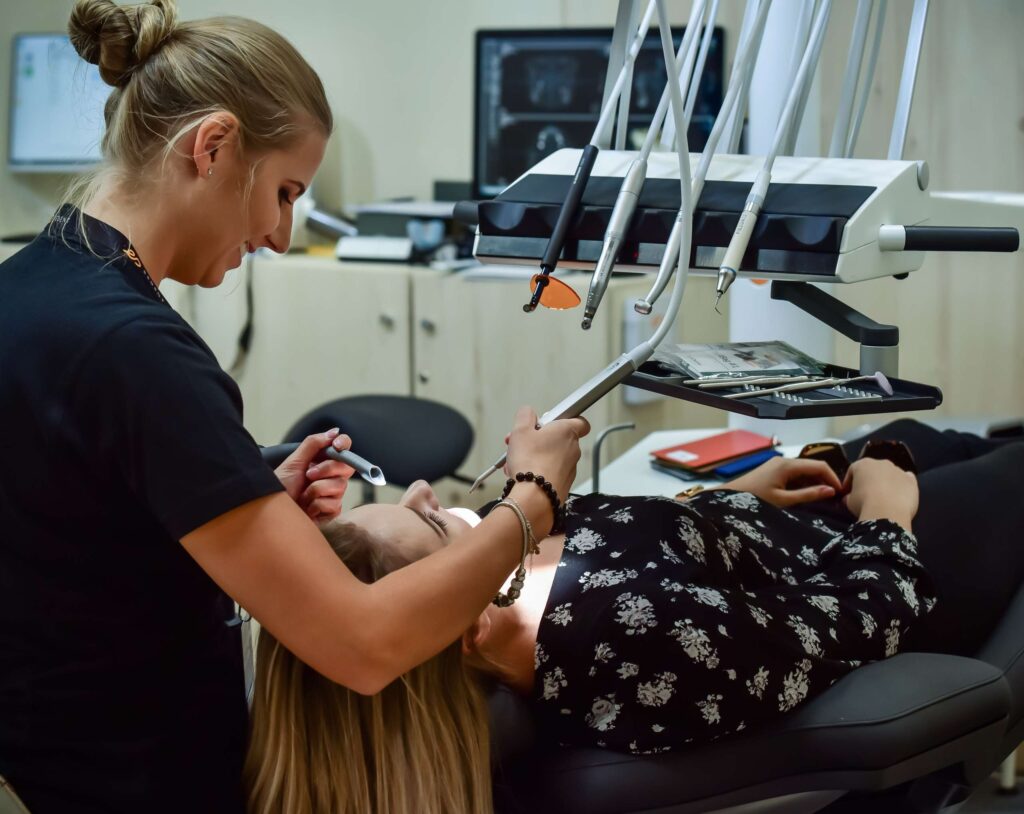What Do Having White Gums Mean?

Pink gums are typically a sign of healthy gums. They may sometimes appear red as a result of bad oral hygiene. White gums, on the other hand, may indicate a more serious health issue.
The delicate skin that makes up our gums is there to safeguard our teeth. They support the bones, create a tight seal around the teeth, and serve as a barrier against bacteria. To avoid any gum-related issues, it’s essential to take good care of your gums. Your physical well-being may be impacted by the condition of your gums.
So what do having white gums really mean? We’ll elaborate further in this article.
Causes of White Gums
The causes of white gums are numerous, some of them could be extremely serious. White gums are frequently an indication that something is wrong with a person’s oral health. White gums can be caused by a variety of conditions, ranging from simple canker sores to long-term inflammatory illnesses. White gums can occasionally be an indication of oral cancer, therefore it’s important to get checked out by a doctor to get the right diagnosis.
Leukoplakia
The gums, tongue, and inner cheeks could turn white due to the oral disorder known as leukoplakia. It results in the development of white patches in the mouth that you’re not going to be able to brush away. The majority of leukoplakia cases are benign, however some are precancerous. The patches can harden over time and look hairy in appearance.
Leukoplakia’s exact cause is unknown, however doctors suspect that tobacco usage and prolonged alcohol addiction are two contributing factors. Another potential cause is dentures that scrape against your tongue or the inside of your cheeks.
Anemia
When the body doesn’t have enough healthy red blood cells, anemia develops. Your body’s tissues and organs depend on these cells to transport oxygen.
There are different causes for anemia. Crohn’s disease, vitamin B12 deficiency, and celiac disease are a few common causes. The liver, spleen, genetics, hypothyroidism, and severe bleeding are additional causes of anemia.
Anemia Symptoms:
- Fatigue
- Dizziness
- Weakness
- Irregular heartbeat
- Shortness of breath
- Headaches
- Cold hands and feet
- Chest pain
- Paleness in the skin
White patches on the gums are another sign of anemia in addition to pale skin. Red blood cell counts and hemoglobin levels can both be checked by blood tests.
Gingivitis
A mild form of periodontal disease is gingivitis. Gingivitis is most frequently caused by poor oral hygiene.
The gums at the base of the teeth can become inflamed, red, and swollen in people with gingivitis. When brushing and flossing, they can also detect any bleeding or loose teeth. The gums may eventually turn white and begin to recede as a result of the illness.
The best way to handle periodontal problems is with routine oral hygiene maintenance.
Canker sores
Lesions that appear on the gums and in the mouth are called canker sores or mouth ulcers. They might develop inside your cheeks, underneath your tongue, or at the base of your gums. They can be painfully uncomfortable, especially when you’re speaking, eating, or drinking. Usually round or oval in shape, the ulcers feature a red border around a pale center.
Certain regions of the gumline may appear white when canker sores are present on the gums. You should keep in mind that canker sores do not cause your entire gum line to turn pale. Your gum line will only be lighter in color in the region where these open wounds are located. Thus, canker sores could not be the main cause if your gums are generally turning white.
Tooth extraction
The trauma of a tooth extraction might cause the gums around the extraction site to turn white or pale. The color of your gums should return to normal in a few days.
Teeth Whitening
The gums may appear brighter or whiter than usual after having your teeth professionally whitened. It’s possible that this is a brief side effect of the tooth whitening chemicals utilized.
A chemical burn like a sunburn is caused by the teeth-whitening gel used in teeth-whitening procedures, which also causes gum inflammation. The area that has been burned by chemicals becomes slightly painful and whitish.
Within a few hours, your gums should regain their original color.
Menopause
Changes in gum color may also be brought on by menopause. The appearance of the gums can change as a result of menopausal hormone fluctuations.
The color of the gums may become paler or darker than usual due to menopausal gingivostomatitis, a gum and mouth infection, which may also result in bleeding. Along with pale gums, other indications or symptoms of pale gums include mood swings, changes in sleep, and weight gain.
Doctors or dentists advise taking estrogen pills as a menopausal gingivostomatitis treatment.
Oral lichen planus
Lacy white patches on the tongue, gums, and other oral tissue are symptoms of oral lichen planus. Pain, bleeding, and gum inflammation are just a few of the major symptoms that this chronic autoimmune disorder causes.
As they have a higher risk of malnutrition, mouth infections, and oral cancer, people with oral lichen planus should get frequent dental exams.
Oral thrush
A yeast infection called oral thrush, also called candidiasis, results in creamy-white sores in the mouth. It is brought on by Candida albicans, the same fungus that causes vaginal yeast infections.
The gums, tongue, or inside of the cheeks may develop sores. Oral thrush is more common in infants, elderly persons, and diabetics.
Oral cancer
White gums may occasionally be a sign of a more severe disease, such as oral cancer, often known as oral cavity cancer. Your gums, tongue, and roof of your mouth could be affected by this cancer, which has a tendency to spread rapidly.
Around these regions, you might see tiny, thin, flat lumps. They could be flesh-colored, white, or red. The risk in this situation is that oral cancer might not present with any symptoms, which could lead to a delayed diagnosis.
Understanding the symptoms and indicators is important, including:
- Mouth sores that don’t heal
- Bleeding in the mouth
- Growths or lumps inside the mouth
- Thickening of the skin inside the mouth
- Loose teeth
- Tongue or jaw pain
- Ear pain
- Difficulty chewing or swallowing
- Sore throat
- Tooth or jaw sensitivity
White gums are a possibility, as was previously noted, but they do not guarantee oral cancer. Due to the risks associated with oral cancer, it is important to keep this in mind when taking care of the mouth, so make sure to regularly visit your dentist for early detection.

Treatment for White Gums
Treatment for Leukoplakia
Your doctor would take a biopsy from one of your gum patches to identify leukoplakia. Changing the lifestyle patterns that cause the gum patches is typically part of the treatment. Doctors would strongly advise you to stop smoking or chewing tobacco.
Leukoplakia patches may also be frozen off or surgically removed using a scalpel or laser.
There is a significant probability that leukoplakia will return once you have it. Make sure to examine your gums, and report any changes to your dentist. If a patient also has a weak immune system, a doctor may recommend antiviral medications.
Treatment for Anemia
Dietary adjustments that may help you acquire the iron and vitamin B-12 your red blood cells need are part of the treatment for anemia. You can also think about taking a vitamin C supplement, as this nutrient improves the way your body absorbs iron.
Only by managing the inflammatory illnesses that cause anemia can it be treated.
Treatment for Gingivitis
When dental hygiene practices are improved, gingivitis is simple to treat. Gingivitis can be prevented and treated by brushing, flossing, and visiting the dentist on a regular basis.
Scaling, root planning, or laser cleaning can be necessary for severe cases.
Treatment for Canker sores
One of the most controllable causes of white gums is canker sores. Minor canker sores normally disappear on their own in two weeks. Major sores should be examined by a doctor or dentist because they may take up to 6 weeks to heal.
The following are some treatments for persistent canker sores:
- Medicine to relieve pain
- Rinse with salt water
- Oral gels and ointments
- Oral steroids
- Sealing or cauterization in severe situations
Treatment for Oral lichen planus
Although there is no known treatment for oral lichen planus, one can manage the symptoms by:
- The use of corticosteroids to reduce inflammation
- Numbing gels for pain relief
- Medicines that suppress immune system
Treatment for Oral thrush
Antifungal medicines are frequently used to treat oral thrush. Medication can be prescribed by a doctor as a pill, lozenge, or mouthwash.
Treatment for Oral cancer
The type of treatment you receive will largely depend on the stage of the cancer you have. It may involve chemotherapy or surgical removal of the affected lymph nodes or portions of your mouth.
Prevention of White Gums
Finding effective methods to stop white gums is essential for maintaining healthy gums because this can cause stress and anxiety that can be avoided. In general, maintaining good dental hygiene and refraining from particular foods will benefit you and prevent white gums.
Brushing your teeth is an important step in preventing white gums. For healthy gums and teeth, brushing should be done thoroughly and at least twice a day.
Correct tooth flossing is also essential. Maintaining good oral hygiene can assist to keep the gums healthy and white. For the sake of keeping healthy gums and teeth, flossing should be done two or three times daily.
As much as possible, refrain from using tobacco products. One of the main causes of oral cancer, mouth infections, and white gums is tobacco usage. Although changing habits might be difficult, doing so is essential for sustaining excellent health.
Reduced consumption of sugary and acidic foods will also benefit people’s gum health. Many meals and beverages have excessive amounts of sugars and acids, which are bad for the teeth and gums. This is because the gums and teeth can be destroyed by certain meals, which can result in a variety of problems, including white gums.
Regularly visit your dentist for check up and cleaning so they can examine what’s happening to your gums and teeth.
YOUR DENTIST FOR WHITE GUMS IN WALL TOWNSHIP, New jersey

Are you noticing that you’re having white gums? Are you feeling any discomfort or concerned about your teeth and gums near you in Wall Township?
Visit Dr. Avi Israeli of Sage Dental and Spa to check up on your gums and teeth to treat and prevent yourself from having white gums!
Call us to book a consultation today!

